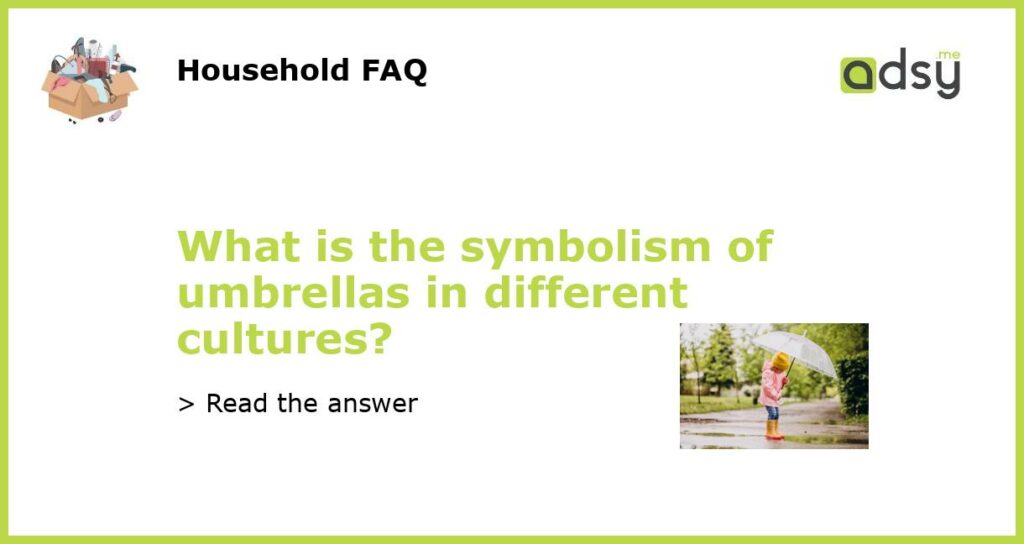The Symbolism of Umbrellas in Different Cultures
Umbrellas have been used for centuries in various cultures around the world. They not only serve as protection from the elements, but also hold deep symbolic meaning. The symbolism associated with umbrellas varies from culture to culture, but there are some common themes that can be found. In this article, we will explore the symbolism of umbrellas in different cultures.
Protection and Power in China
In traditional Chinese culture, umbrellas are seen as symbols of protection and power. They are often associated with high-ranking officials and are used to signify authority and rank. The Emperor, for example, would be accompanied by attendants holding large umbrellas as a sign of his power and status. In addition to their protective qualities, umbrellas are also believed to ward off evil spirits.
The color of the umbrella also holds significance in Chinese culture. Red umbrellas are considered particularly auspicious and are often used in weddings as a symbol of happiness and good luck.
Spiritual and Mystical Significance in India
In Indian culture, umbrellas hold spiritual and mystical significance. In Hinduism, the umbrella, known as “chhatra” or “chatra,” is a symbol of royalty and protection. It is often depicted in art and mythology as a canopy held above deities or revered individuals. The umbrella is believed to offer shade and protection from negative influences.
In Buddhist traditions, the umbrella represents the concept of the Dharma, the teachings of the Buddha. It symbolizes protection from suffering and provides shelter and refuge. The umbrella is a common feature in Buddhist art and is often depicted above the Buddha or other enlightened beings.
Relationship with Rain in Japan
In Japan, umbrellas have a strong association with rain and are often used as protection from it. They are seen as a symbol of practicality and preparedness. The traditional Japanese umbrella, known as “wagasa,” is made of washi paper and bamboo, and is highly regarded for its craftsmanship and beauty. It is a common sight during rainy seasons and is also used in various traditional ceremonies and festivals.
The umbrella also holds symbolic meaning in Japanese culture. It is often associated with femininity and elegance. In traditional Japanese art, umbrellas are depicted as a symbol of beauty and grace.
Symbol of Social Status in Europe
In European culture, umbrellas have historically been seen as a symbol of social status. During the Victorian era, umbrellas were a luxury item and were often carried by the upper class. The quality and design of the umbrella were indicators of wealth and sophistication.
Umbrellas are also associated with the idea of protection and shelter in European culture. The phrase “under someone’s umbrella” is often used to describe being under someone’s care or protection.
In literature and art, umbrellas have been used as symbols of secrecy and mystery. They have been used as props in spy stories and detective novels, adding an air of intrigue to the narrative.
Everyday Utility in Modern Culture
In modern culture, umbrellas primarily serve as practical tools for protection from rain and sun. However, they can also have symbolic meaning on a personal level. For some individuals, carrying an umbrella may represent a sense of preparedness and responsibility.
In certain subcultures, such as goth or alternative fashion, umbrellas can be used as accessories to express individuality and style. They can be decorated with unconventional patterns or colors, making a statement and challenging mainstream norms.
In conclusion, umbrellas have deep symbolic meaning in different cultures. They can represent protection, power, spirituality, social status, or everyday utility. Understanding the symbolism of umbrellas in different cultures can provide insight into the values, beliefs, and traditions of these societies.






